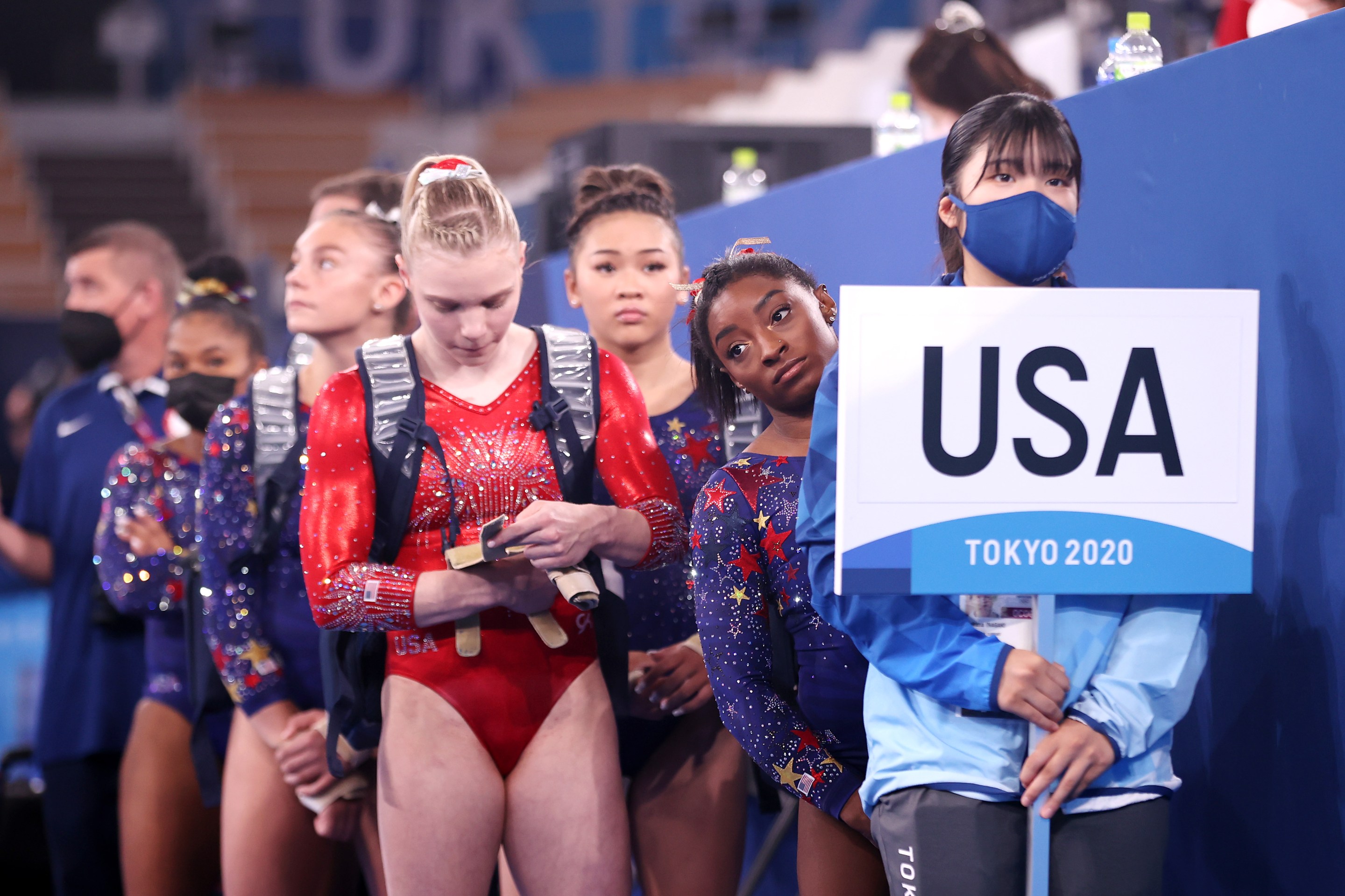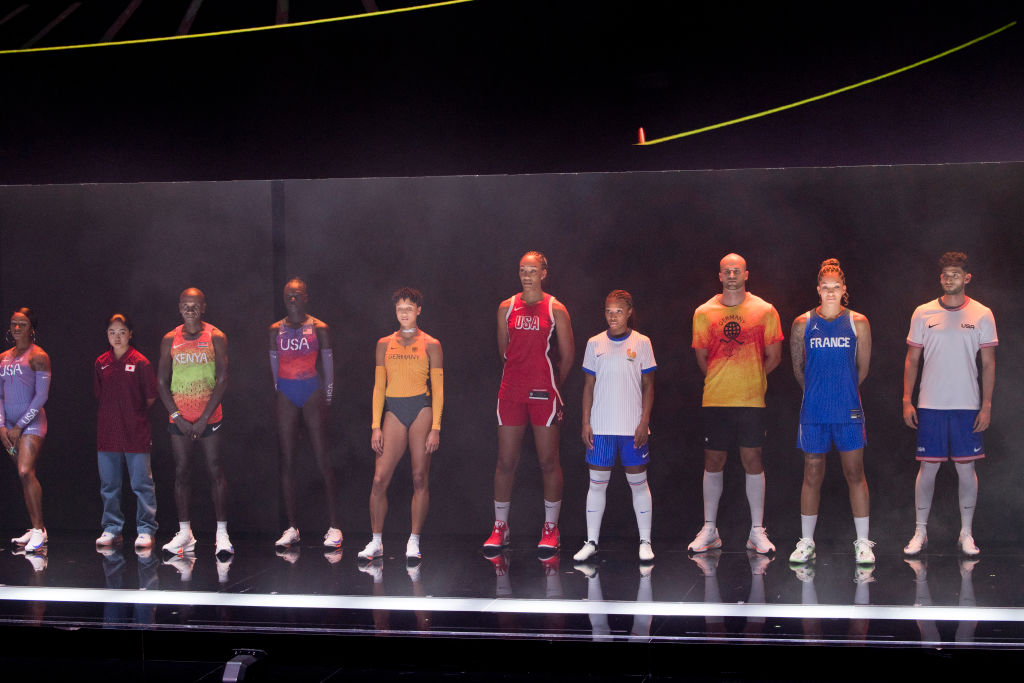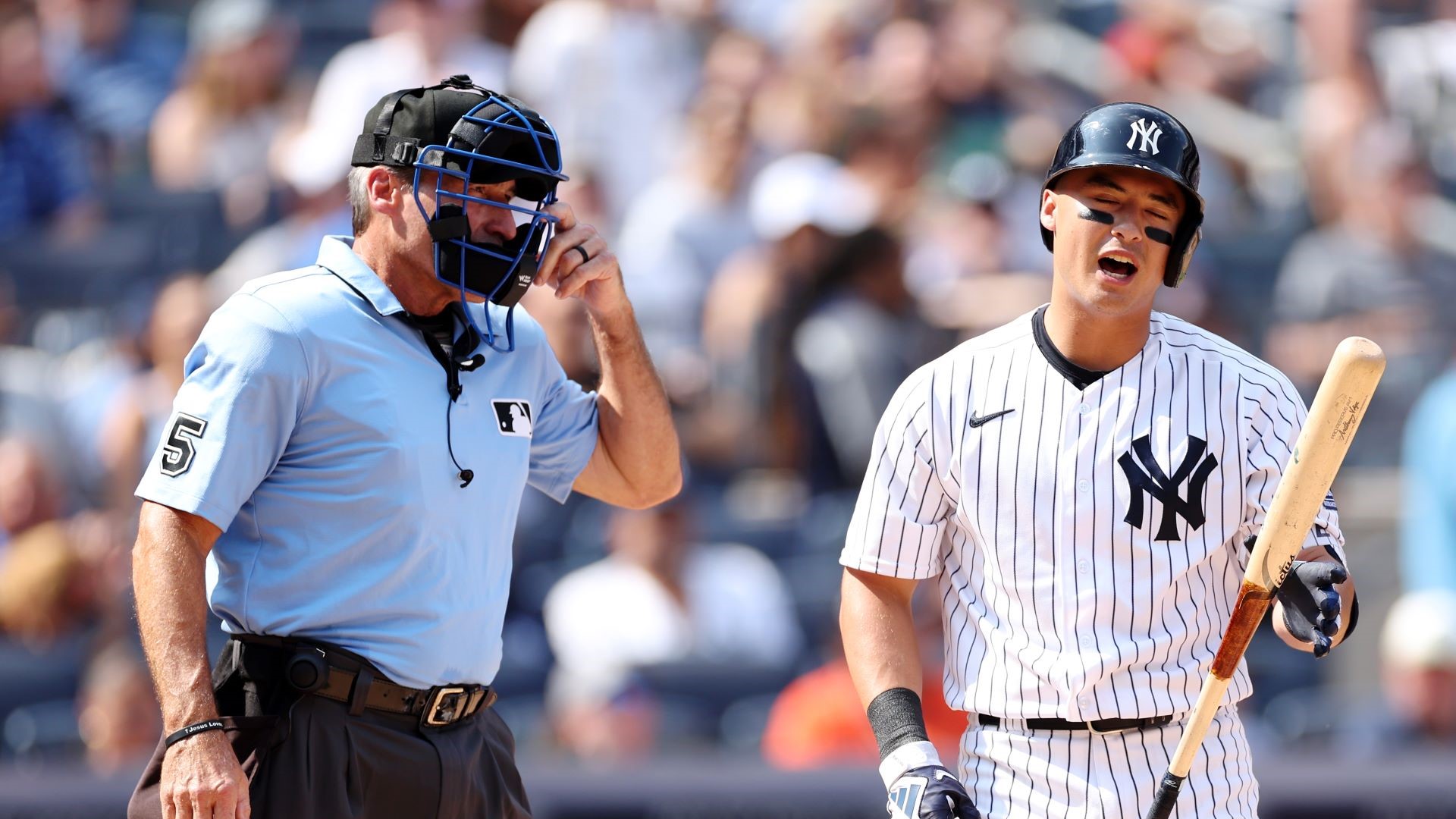Tenths Do Matter, Even When You’ve Got Simone Biles
4:35 PM EDT on July 26, 2021

Photo by Laurence Griffiths/Getty Images
No one in the history of women’s gymnastics has ever said that a few tenths of a point won’t matter. That is, until Tom Forster, the women’s high performance director of USA Gymnastics, came along.
Well, that’s not exactly what he said, but it’s the gist. Last month, after the conclusion of Olympic Trials, Forster was asked about the composition of the team and why the selection committee based its decisions on all-around results, even though they didn’t need to. The rules dictated that only the top two all-around finishers had to be named to the team. The rest could be selected according to other criteria, such as individual medal earning potential, and most significantly, the ability to contribute to the highest possible team score. A more strategic-minded selection committee might have put a gymnast who placed fifth or sixth in the all-around at Trials on the Olympic team because of their ability to perform well in one or two events that offered the most potential to bump up the team’s total score.
Which brings us to Forster’s comments after Trials. It was clear from running the numbers that the gymnast whose scores would’ve resulted in the highest team score by a couple of tenths was MyKayla Skinner, the 2016 Olympic alternate, due to her vaulting prowess. But Grace McCallum, who placed fourth in the all-around, mere three-tenths ahead of Skinner, was named to the team instead. Skinner was chosen for the non-nominative, non-team spot, which means she could compete as an individual and earn apparatus final berths, but her scores wouldn’t factor into the team’s total. (This also left her in the unenviable position of having to fight it out with Jade Carey, the Americans’ other individual qualifier for vault/floor final spots, since the other of the United States’ two allotted spots would surely go to Simone Biles. Carey got both and Skinner will go home empty-handed.)
“We’re so, so fortunate that our athletes are so strong that I don’t think it’s going to come down to tenths of a point in Tokyo,” Forster said of the choice between McCallum and Skinner. “We didn’t feel like it was worth changing the integrity of the process simply for a couple of tenths.” By “integrity of the process,” he was referring to the all-around rankings; for Forster, they appeared to be somehow sacrosanct, overriding other considerations like putting together the highest scoring team.
All-around standings aren’t a process. They’re just results. What you do with those results, how you interpret them, that’s the process. The scores at Trials were also kind of a mess. (The problems of domestic scoring is a topic for another piece.) Prophecies from the oracle these scores were not, and relying solely on them to determine team composition was neither wise nor just.
Before I go any further, I want to say that there were legitimate gymnastics reasons to include McCallum, who is a lovely gymnast and person, on the team over Skinner—she had more usable routines than Skinner across the board even if her scoring potential was somewhat lower—but Forster didn’t cite those reasons in justifying her selection. Forster and the selection committee simply rubber-stamped the Trials results. If this is the “process” then why do we even need a high performance director or a selection committee? (In the qualifications, Skinner, in her non-team role, not only outscored McCallum on vault, but also beam and floor because McCallum erred and missed a composition requirement on beam.)
I bring this up not to highlight McCallum’s deficiencies as a gymnast, but Forster’s as a leader. Since taking reins of the U.S. program in 2018, he’s proven himself to be a middling manager and an inept strategizer. This was on full display Saturday night when the U.S. women’s gymnastics team, led by Simone Biles, the greatest of all time, placed second behind a resurgent Russian team in the qualification round of the Olympic competition.
Forster, however, was right: it didn’t come down to tenths. Russia had pulled ahead by a full point after a near flawless competition and on the strength of Viktoria Listunova and Vladislava Urazova. Listunova was too young to compete last year, but due to the postponement, she’s on the Olympic team in 2021. Together this duo, along with resplendent veteran Angelina Melnikova, has turned Russia into a much more formidable force than the one the U.S. last faced in competition, all the way back in October 2019 at the World Championships, where they trounced them by six points.
It seems like Forster’s “tenths” comment was probably predicated on those lopsided team results from 2018 and 2019, where the U.S. easily defeated much weaker Russian teams. That Russia posed a more significant threat in 2021 than they had in previous years shouldn’t have come as a surprise. Listunova’s and Urazova’s potential has been obvious for the last few years. At the inaugural junior world championships in 2019, the Russians’ technical superiority and the U.S.’s poor leadership were on full display. Russian won the team title, followed by China, with a talented U.S. team placing third. Listunova won the all-around title, followed closely by Urazova. The only gold the U.S. women picked up in that competition was Kayla DiCello’s gold on vault. (DiCello was one of the 2021 alternates.)
There’s nothing wrong with the U.S. not winning everything in sight as they have for the past decade. No program can remain dominant forever and dips are to be expected. But this is not about the results themselves, which the athletes should take pride in. This is about the process that contributed to those results, which had absolutely nothing to do with how hard the athletes worked or how deserving they were, but about how they were directed or misdirected. The 2019 junior worlds should’ve been a wakeup call that the program wasn’t being properly managed. First (and again), there’s Forster’s fetishization of all-around results in qualifying competitions. In selecting the team, he left off Konnor McClain, definitely the most promising junior in the U.S. at the time, due to a fall at selection camp. McClain was definitely someone he should’ve wanted to get out in front of international judges. (She was named alternate.)
Speaking of international judges, it seems that Forster and the U.S. team learned that the judges were going hard on the dance skills at this competition. In a Facebook dispatch from the competition, Forster wrote, “We definitely learned that dance elements are being weighed heavier than tumbling elements.” One of the areas in which the U.S. juniors got slammed was in how they performed certain difficult leaps, jumps, and turns; these are also critical to building the difficulty score of an exercise. The U.S. women have been guilty of pushing the D score up on the basis of these difficult dance elements—as have other countries—but increasingly, these skills are being evaluated really harshly by the judges, which is a good thing since many are poorly done. But this means that countries need to start reevaluating their use of these skills. They’re not worth putting into your exercise unless you can do them well, because the deductions in many cases exceed the value of the skill. Gymnasts would be better off with easier dance skills performed flawlessly.
PSA 231: Dance elements get slammed in the E-Score. The US isn't alone in going for D+ dance, but these are losing more than they're worth almost every time out, wolf turns especially.
— Pamchenkova (@Pamchenkova) July 25, 2021
Coaches in general, not just the US, need to reconsider some of these dance elements. pic.twitter.com/mCQjER2hQk
(Two of the gymnasts used as examples of poorly performed dance elements are American, though both of the videos were drawn from competitions before Forster took over the program.)
None of this should’ve come as a surprise to Forster. He shouldn’t have learned this at the competition. USA Gymnastics actually has highly placed people in FIG, including Tatiana Perskaia, a member of the selection committee, who is also a member of the women’s technical committee, which makes the rules for women’s gymnastics. She had to be aware of how the judges were going to be evaluating the elements. Not all countries have this kind of resource readily available. (But all countries can reach out to the WTC for guidance in these kinds of matters if they wish to.)
There are other examples of Forster not understanding rules or how skills are going to be evaluated. When in 2018 he was asked if he understood the farkakte FIG individual qualification process, he said that he did, though his comments and choices indicated that perhaps he did not. After Olympic Trials, he admitted that he wasn’t initially clear on the process and tried to suggest that it was because FIG hadn’t finalized, despite the fact that Spencer Barnes of the Balance Beam Situation, who is not being paid by USA Gymnastics, somehow figured out how it all worked, and also how USA Gymnastics’ choices went against their own interests.
Forster’s job is to know the rules and use them to guide all kinds of decisions, from team selection to skill selection. He’s supposed to advise the coaches about what their athletes need to do in order to be considered for competitions and also tell them when they need to reconsider the elements in their gymnasts’ routines because they’ll be heavily penalized. This is part of the process that Forster seems less interested in.
For the last few years, the U.S. strategy in the team competition seems to have been: put Simone Biles up and let the rest work itself out. This has pretty much worked, until Saturday night, when Biles had what was probably one of her worst outings in quite some time. With the exception of bars, where she performed solidly and almost to her potential, Biles had significant mistakes on every other piece. She started on floor where she bounced, not just out of bounds, but off the floor mat. She still managed to score well enough to qualify in second to the event final there, just slightly behind Vanessa Ferrari of Italy, though this is the first time in her senior career that she wasn’t the top qualifier on this event. Then she went to vault, where she was off-direction on her Cheng and again, landed completely out of bounds, but still managed to qualify to the final, this time in first, but only narrowly so. And finally on beam, after an aggressive, flawless set, she stumbled back badly out of her dismount—not the eponymous one but her much easier full twisting double back—and probably got hit with the maximum deduction there, around .8. Biles, the defending world champion on beam, had to wait until everyone had gone—two more subdivisions followed the U.S.—to see if she made it into that final. She’s not usually forced to wait at the edge of her seat to see if she’s qualified. She did, but not anywhere near the top spot. Though Biles had the seventh best score of the night—top eight make it through—she claimed the sixth spot since one Chinese gymnast who scored higher was unable to advance through to the final due to the fact that two of her teammates had placed ahead of her. (Maximum two per country can advance to the all-around and individual apparatus finals. Skinner got bumped out of the vault final this way.) Biles also made it into the uneven bars finals with the 10th-highest score because two Russian gymnasts were eliminated by the two-per-country rule.
Finally, Biles did rank first in the all-around qualification, but not by her usual margins; she scored less than four-tenths higher than Rebeca Andrade of Brazil.
I’m not going into detail about each of Biles’s mistakes to malign her. Despite what happened on Saturday, she’s still the first gymnast to qualify to all event finals and the all-around final since Shannon Miller did it in 1992. Biles remains the GOAT and qualifications didn’t change that. But what all of those sub-par (for her) routines did was destroy her margins over the rest of the field. And her margins are the Americans’ margin for error. Her mistakes in qualifications made it impossible for other U.S. gymnasts to make mistakes and still win, as they had done in previous competitions, like the 2019 world championships when they prevailed over a much weaker Russian team despite having to count two major errors. (Not to mention that in 2019, they had Jade Carey, second best vaulter in the world to Biles, on the actual team. That definitely helped increase their lead over the field.)
And the rest of the U.S. team had major problems. Jordan Chiles, who had been a rock at nationals and Trials, fell twice from the beam and made a major error on bars. I imagine that she also got dinged pretty hard for her wolf turn on floor. (This goes back to how harshly dance skills are being evaluated and how that turn, which Chiles has never done well in competition, should’ve been replaced with something simpler that she could do cleanly in order to wring every possible tenth out of that routine.). McCallum bounced awkwardly out of her first floor pass and made an error on beam. The U.S. had to count her beam score, though, because Chiles’s two-fall set led to a score all the way down in the 11s. Lee, who has been dealing with a foot injury all year, had a relatively weak outing on vault (though she was stellar on beam and bars, where she made finals). The best performing American gymnasts were the ones not officially on the team—Skinner and Carey. The latter made the floor and vault finals right behind Biles.
Biles is human and will make mistakes. This is why the United States’ strategy can’t just be to expect that Biles will generate huge margins for them, because that might not always happen. It’s also spectacularly unfair to expect her to carry the team every time. In an Instagram post following the competition, Biles spoke about the pressure she’s under. She wrote, “I truly do feel like I have the weight of the world on my shoulders.” She does, if by “world” she means “the competitive fate of the U.S. team.” And the NBC primetime broadcast of the women’s qualifications made it abundantly clear that it was all riding on Biles. They cut Chiles’s missed routines and didn’t show McCallum’s beam. They alluded to some troubles but that was about it. But they did show every single one of Biles’s mistakes, which were offered up as the explanation for the less-than-stellar finish for the U.S. In a way, that’s accurate, because the strategy all along was to rely on Biles to save the day.
It turns out that Valentina Rodionenko, the head of the Russian program, was right when back in April she said of Biles, “She’s 70 percent of the American team. You remove her and we will easily beat them.” Except that Biles was there. But she wasn’t doing what she normally does for the team—giving them insurmountable margins for error.
Forster, after qualifications, insisted that he and the committee made the right call when it came to choosing the team. “We went on rank order because we thought it was a good order,” he said. At this juncture, defending the choice is the right thing to do because in doing so he’s defending the gymnasts he chose and have worked so hard to compete at the Olympics. Forster, not the athletes, is the one who needs to take the hit.
The scoreboard goes back to zero for team finals, and I’m still betting on the U.S. to ultimately prevail and walk away with their third consecutive Olympic team gold. What I’m putting my faith in here is not the brain geniuses at USA Gymnastics, but Biles getting herself together and performing, if not at the peak of her potential, then much closer to it than she did during qualifications. If she does that, then the U.S. should be able to close the gap on Russia and move past them. I also believe that the rest of the team can improve their performances as well. But the Russian women, who just watched their male counterparts win their first Olympic team gold since 1996, must smell blood in the water for the first time since the 2012 Olympics, when they last had a team capable of challenging the U.S. women. It will be much closer than any of us had imagined it would before the start of the competition.
Even if the U.S. walks away with the team gold at the end of the night, we shouldn’t forget what happened in qualifications. It should serve as a wakeup call to a program that has been leaning on its star far too much to maintain its dominance; a program whose leaders arrogantly assumed they didn’t need extra tenths and wildly underestimated their rivals. Even if Biles had been her usual self, the problems are still there and will only become more glaring when she retires.
All that being said, it’s important that we don’t learn the wrong lessons from this. Yes, Tom Forster and USA Gymnastics can do a better job when it comes to team and athlete management, but what happened in qualifications, under no circumstances, means that we should go back to the Martha Karolyi way of doing things, a way that created a toxic environment in which sexual and other forms of abuse thrived for decades. I’d much rather take a bungled selection and poorly constructed routines over abuse and manipulation. (Also, let’s not let the recent past—2011–2016—obscure some of the more questionable team selections that Karolyi made during her tenure, such as the 2004 Olympic team that was stacked with vaulters but didn’t have gymnasts who could hit a dance bonus on floor.) But it probably shouldn’t be an either/or proposition. It should be possible to treat the athletes humanely while guiding them and their coaches appropriately and making sound strategic decisions. That would be a process with a whole lot of integrity.
If you liked this blog, please share it! Your referrals help Defector reach new readers, and those new readers always get a few free blogs before encountering our paywall.
Stay in touch
Sign up for our free newsletter




